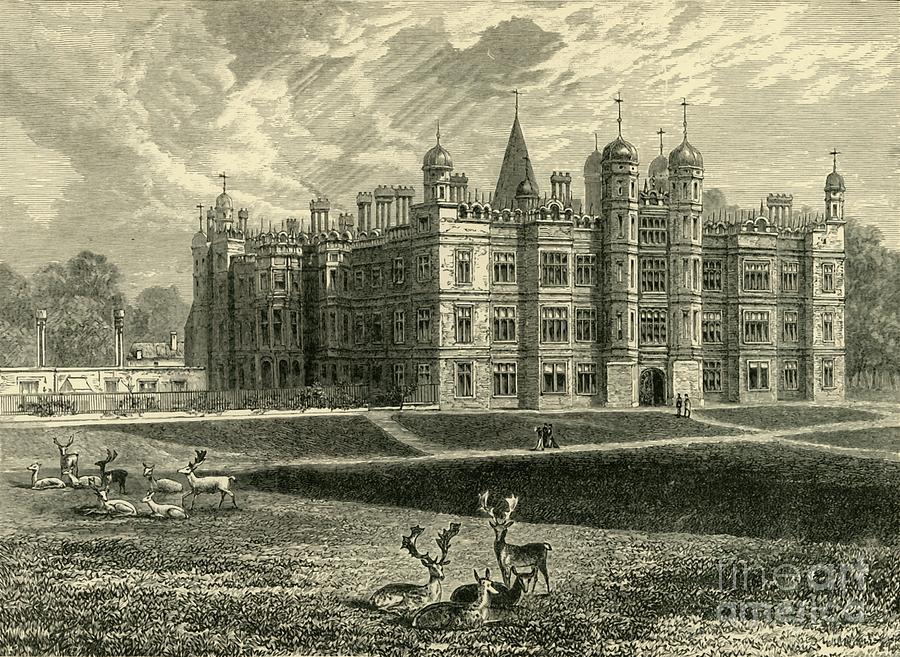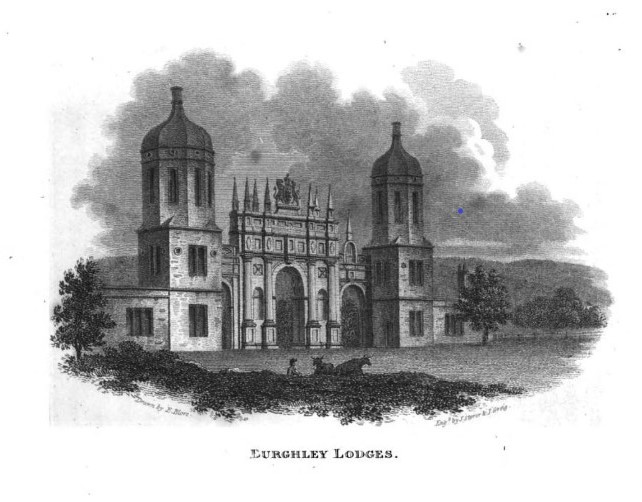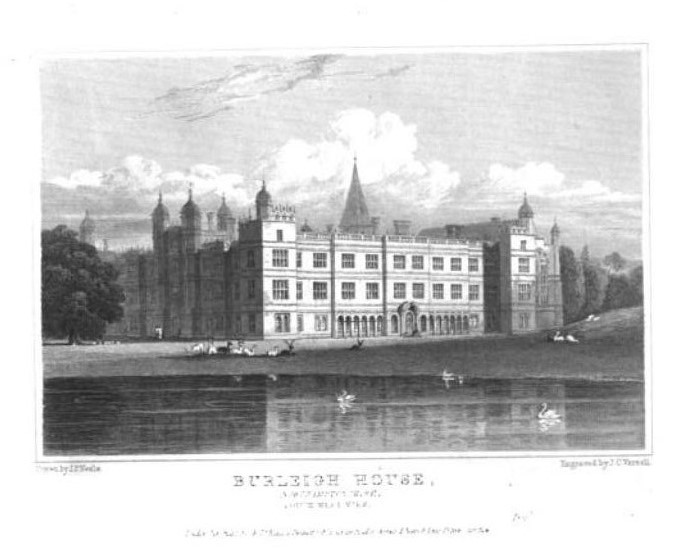
Burghley House in Lincolnshire near Stamford was built in the 16th century for Sir William Cecil, the Lord High Treasurer to Queen Elizabeth I. The Cecils would later become the Earl of Exeter and then Marquesses.
In the mid to late 1700s, Capability Brown would design the avenues for the park and create a man-made lake.
Fans of 2005 Pride and Prejudice will recognize it from the movie as Rosings.
From a 1815 guidebook, there were a variety of buildings at the park including a dairy house, gamekeeper’s lodge, boathouse, greenhouse, stables, and temple.

A guide to Burghley house, Northamptonshire (1815)
The interior of the manor held a great hall, chapel room and chapel, billiard room, ballroom, drawing room, and a variety of dressing rooms and bedrooms. The guide describes the paintings and a collection of over one hundred and twenty different species of British Birds, stuffed and displayed in eight-six glass cases.
The furniture and design of the rooms is lightly touched on, the author placing emphasis on the antiquities and art, but The Gentleman’s Magazine recommended it as a perfect guide for the traveller, who would find the volume “no superficial companion”.

A 1801 broader guide book of the region described the site of Burghley house as “more like a town than a house…the towers and pinnacles so high, and placed at such a distance from one another, look like so many parish churches in a great town.” A Tour Through the Whole Island of Great Britain (1801).
Another guide describes the “sumptous architecture…in the reign of Elizabeth” Views of the Seats of Noblemen and Gentlemen (1820). The consensus of these guides are that Burghley was a place to visit.
It is currently closed to the public but scheduled to be reopen in March 2023. The website has some fantastic flyovers (Burghley House | Burghley House, Stamford) to admire the spires and park. as well as hosting a virtual tour that has interactive components. I highly recommend the virtual tour if you have some time to spend, as it gives a detailed glance inside this magnificent home and the many treasures there, including many of the paintings that a Regency visitor would have admired.










Amazing house, um…town. My goodness. Thank you for the article and the link to the flyover. I would like to do the virtual tour but I’ll wait until after the holidays. The flyover itself really makes one’s imagination run wild with what life might have been like 400 years ago.
Blessed holidays, in whichever you observe.
Glad you enjoyed! Happy holidays!